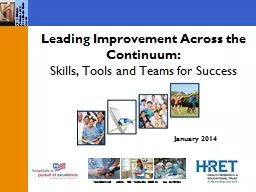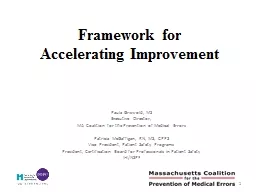PPT-Leading Improvement Across the Continuum:
Author : marina-yarberry | Published Date : 2018-03-08
Skills Tools and Teams for Success January 2014 Overview Two new frameworks Improvement Continuum Leadership Action Model Four levels Topicmicrosystem Care coordination
Presentation Embed Code
Download Presentation
Download Presentation The PPT/PDF document "Leading Improvement Across the Continuum..." is the property of its rightful owner. Permission is granted to download and print the materials on this website for personal, non-commercial use only, and to display it on your personal computer provided you do not modify the materials and that you retain all copyright notices contained in the materials. By downloading content from our website, you accept the terms of this agreement.
Leading Improvement Across the Continuum:: Transcript
Download Rules Of Document
"Leading Improvement Across the Continuum:"The content belongs to its owner. You may download and print it for personal use, without modification, and keep all copyright notices. By downloading, you agree to these terms.
Related Documents














